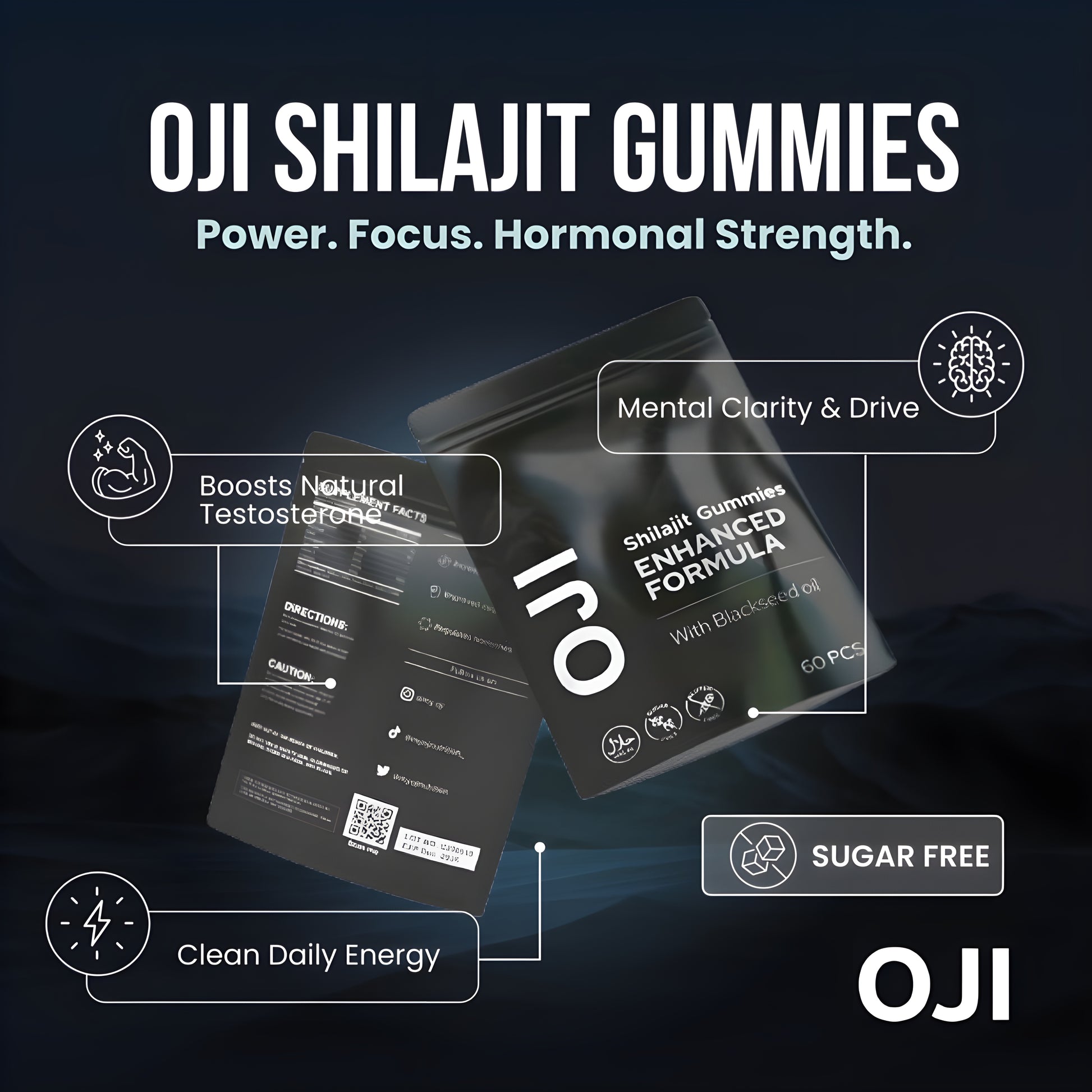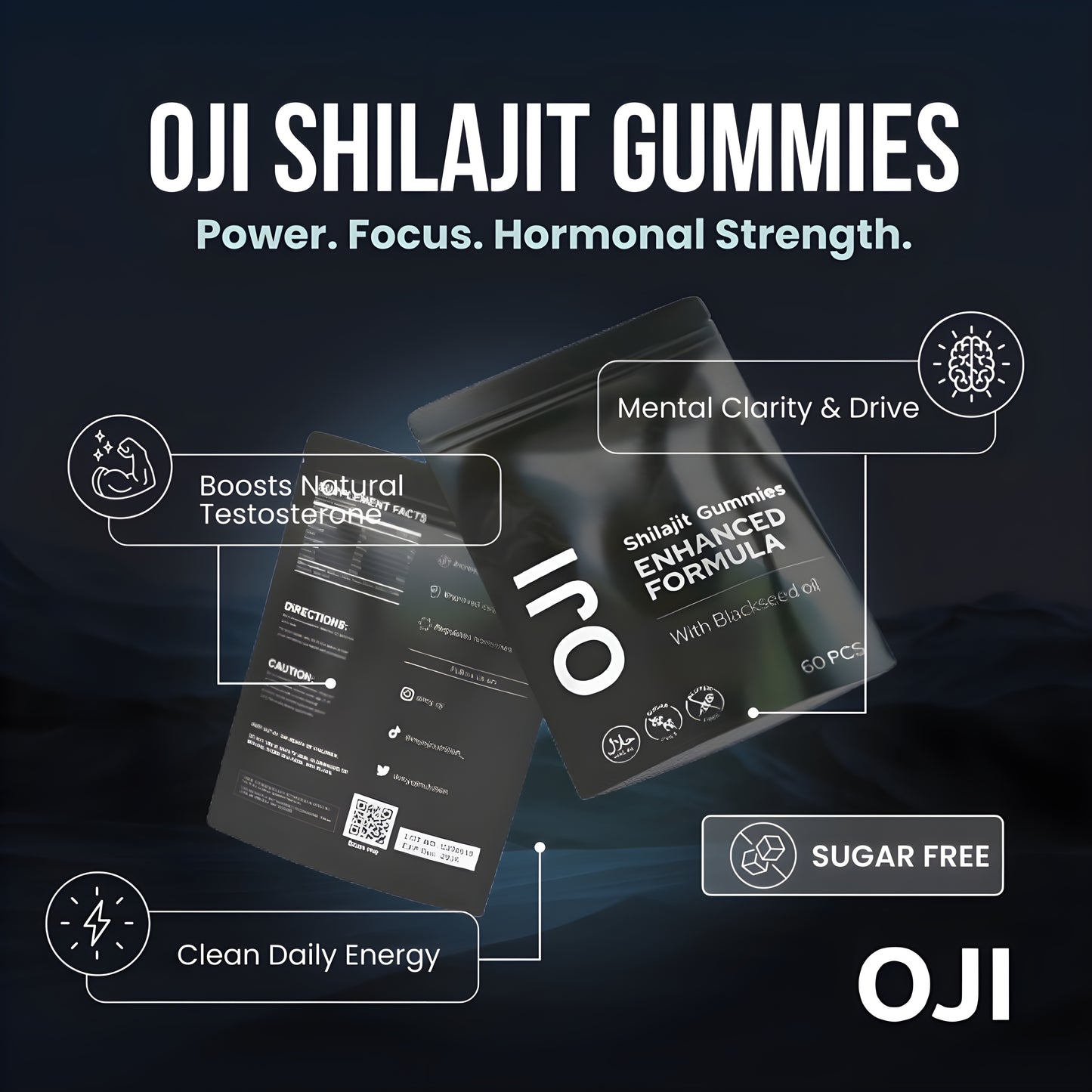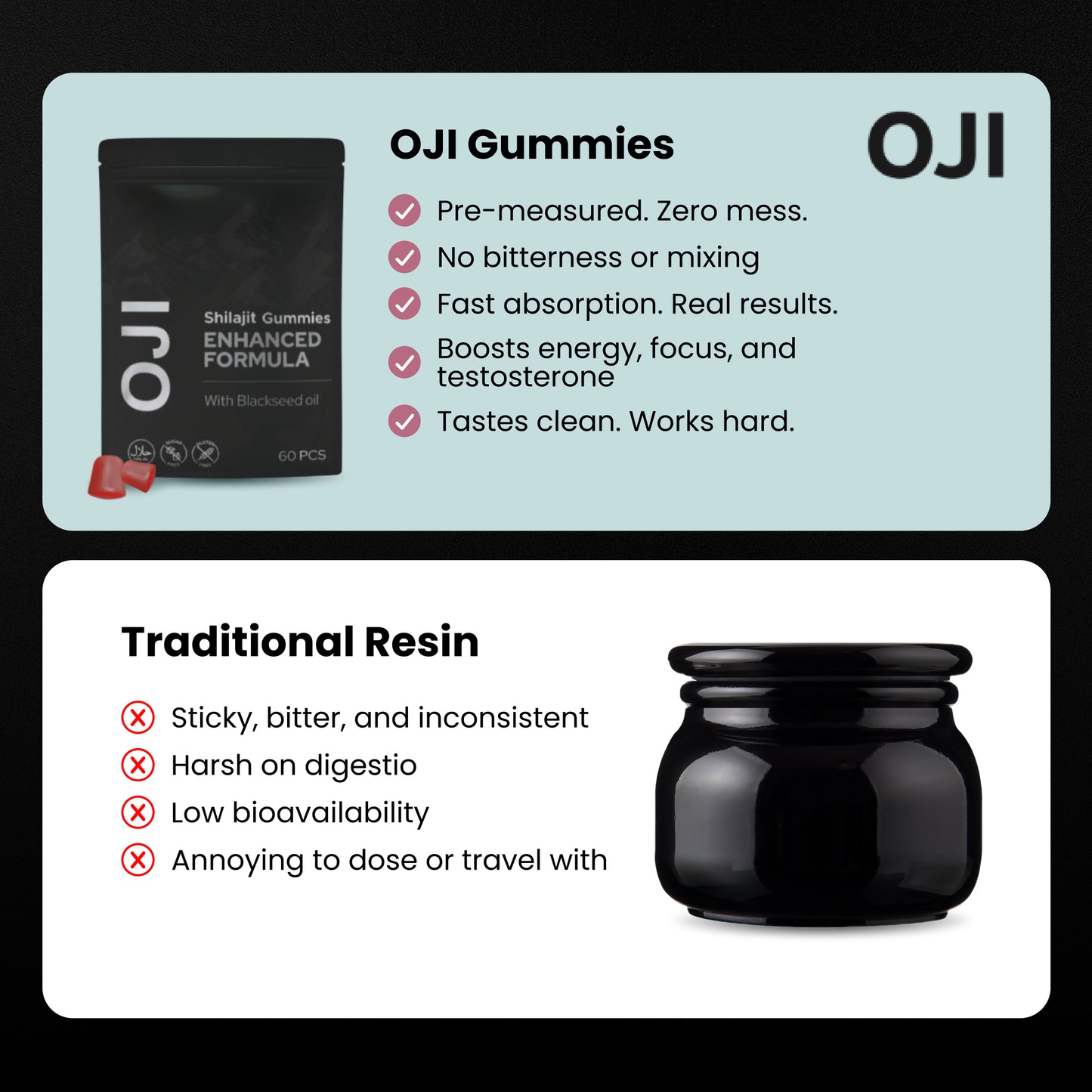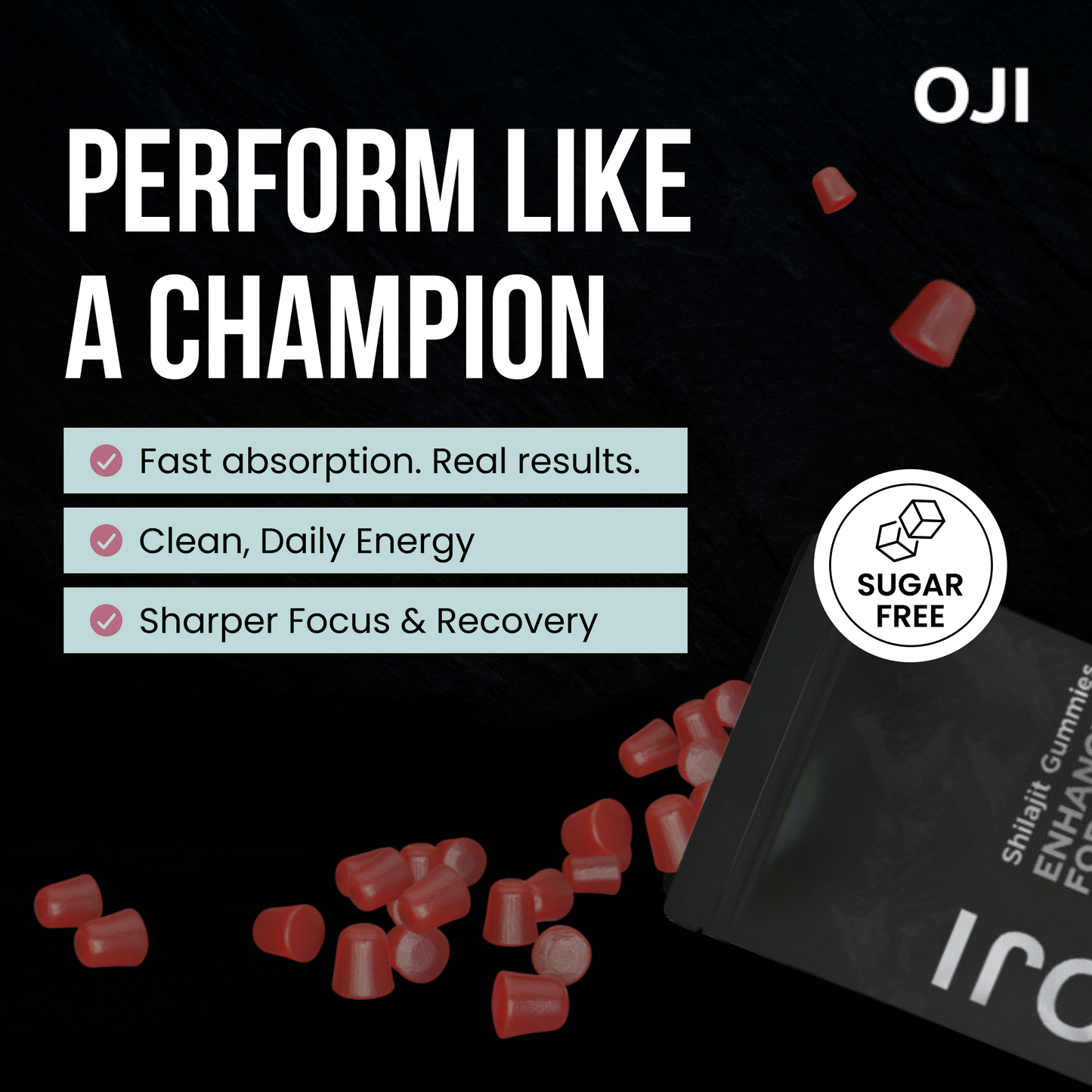Think of third-party supplement testing as getting an independent, expert opinion on your health products. It’s a critical action where a brand voluntarily sends its supplements to an unaffiliated lab for an unbiased verdict on safety and quality. Without this step, you’re basically just taking the manufacturer's word for it.
What Is Third Party Supplement Testing

Imagine you’re buying a used car. You wouldn't just trust the seller’s claims. You’d get a trusted, independent mechanic to inspect it thoroughly. Third-party testing applies that exact same logic to what you put into your body. It acts as an impartial check to prove a product meets the highest standards.
This process is vital because, unlike pharmaceuticals, the supplement market isn't as strictly regulated. This loophole means some brands can make bold claims without objective proof. Independent testing closes that gap, giving you a much-needed layer of protection.
Why You Must Demand Independent Verification
So, what exactly should you look for in this "independent inspection"? It all boils down to three key pillars that directly affect your health and whether you're getting your money's worth. If you skip this verification step, you could be swallowing something ineffective, contaminated, or even outright dangerous.
The table below breaks down exactly what a reputable third-party test should cover. Use it as your checklist.
Key Pillars of Supplement Verification
| Verification Pillar | What It Checks For | Why It's Important for You |
|---|---|---|
| Product Purity | Screens for contaminants like heavy metals (lead, mercury, arsenic), pesticides, and harmful microbes. | Ensures you’re not accidentally ingesting unwanted toxins along with your vitamins or minerals. |
| Ingredient Potency | Verifies that the amount of the active ingredient listed on the label is actually what's inside. | Guarantees you're getting the exact dose you paid for—not less. If it says 500mg, you should get 500mg. |
| Overall Safety | Tests for banned substances, undeclared allergens, and other harmful additives. | Protects you from unexpected side effects, allergic reactions, or health risks. Crucial for athletes and everyone else. |
A good lab report confirms that the product has passed all three of these critical checks.
In short, third-party testing flips the script. Instead of you having to trust a brand blindly, it forces the manufacturer to prove their product is safe and effective. It gives you the peace of mind that what's on the label is precisely what's in the bottle.
Ultimately, choosing products backed by this rigorous process is one of the smartest actions you can take for your health. It helps you cut through the marketing noise and make decisions based on cold, hard facts.
The Hidden Dangers in Untested Supplements
Picking a supplement off the shelf without proof of third party supplement testing is a massive gamble. You're navigating a minefield blindfolded. While the label might promise a boost in energy or better health, what’s actually inside could be something else entirely—and not in a good way.
An untested product throws the door wide open to a host of hidden dangers that can seriously compromise your health instead of supporting it.
The most immediate risk is contamination. Shoddy sourcing or sloppy manufacturing can lead to supplements tainted with genuinely harmful substances. We’re not talking about minor impurities; we’re talking about dangerous contaminants that pose a real threat to your wellbeing.
Common Contaminants Found in Supplements
Without an independent lab checking things over, you have no way of knowing if your supplement contains:
- Heavy Metals: Nasty stuff like lead, arsenic, and mercury can build up in your body over time, leading to serious neurological and organ damage.
- Microbial Pathogens: Think Salmonella or E. coli. These can cause severe food poisoning and other nasty infections you definitely don't want.
- Undeclared Allergens: Hidden gluten, soy, or dairy can be a serious risk for anyone with sensitivities or allergies.
This infographic gives you a clear picture of the common contaminants that independent testing is designed to catch, making sure the product is safe to use.
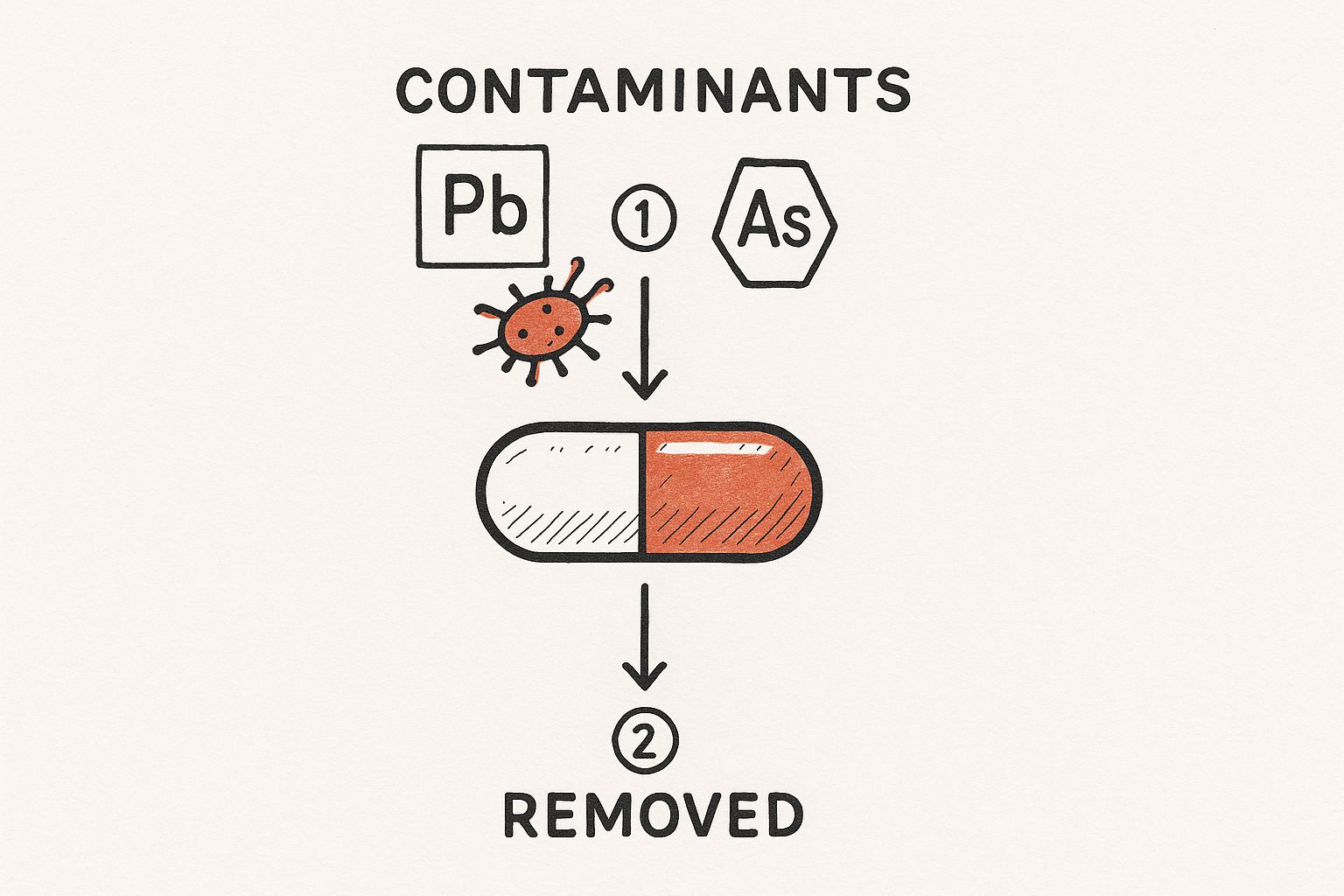
It’s a stark reminder of how a single capsule, without proper checks, could be carrying serious health risks like heavy metals and bacteria.
The Threat of Adulteration and Spiking
Beyond accidental contamination, there’s a more deliberate danger lurking in the shadows: adulteration. This is when a manufacturer intentionally adds unlisted ingredients to a product, either to cut costs or to make it seem more powerful than it is. These additions can range from cheap fillers to potent, and often illegal, pharmaceutical drugs.
For an athlete, this is a career-ending risk. A product spiked with a banned stimulant could easily lead to a failed drug test, disqualification, and a permanently damaged reputation. But it's not just athletes at risk. For the average person, swallowing undeclared prescription-strength ingredients can cause all sorts of unexpected side effects and dangerous health issues.
This isn't just a hypothetical problem. The presence of undeclared, banned substances in supplements has been a major concern in the UK sports world for years. A landmark study back in 2008 bought 152 supplements from UK retailers and found that a shocking 10.5% were contaminated with steroids or stimulants banned in most sports. You can discover more about the history of supplement contamination in the UK.
This reality check highlights one crucial action: you simply can’t trust a brand’s marketing claims alone. The only way to really know what you’re putting in your body is through the rigorous, unbiased analysis that comes from independent third party supplement testing. It’s what turns a risky gamble into a safe, informed choice for your health.
How to Read a Certificate of Analysis
A Certificate of Analysis, or CoA, is your direct window into what a third-party lab found inside your supplement. At first glance, these documents can look intimidating—a wall of numbers and technical terms. But learning how to read one is the single most powerful skill you can develop to check a supplement's safety and quality for yourself.
Think of it as the product’s report card. It tells you exactly how it performed on its final exams before it was allowed to graduate to the shelf.
Once you know what to look for, it's actually quite simple. You're just comparing the test results against the established safety limits to make sure everything checks out. This is how you move beyond just trusting a brand's marketing claims and start relying on hard data.
This example CoA shows a typical layout, with columns for the specific test, the result, and the acceptable limits.
As you can see, the document clearly lists each element tested and lays out the findings in a structured way, making it easy to compare the numbers.
Decoding the Key Sections
A CoA is usually organised into a table with three critical columns you need to focus on. Understanding what each one means is the key to unlocking the story it tells.
Here’s a simple breakdown of what to look for:
- Test/Analyte: This column lists exactly what was tested for. You should see entries for potency—like Fulvic Acid in Shilajit—and purity, which covers checks for specific heavy metals (e.g., Lead, Arsenic, Mercury) and microbes.
- Result: This column shows the actual amount of the substance found in that specific batch of the supplement. The results are usually measured in units like parts per million (ppm) for minerals or colony-forming units per gram (CFU/g) for microbes. This is the number that really matters.
- Specification/Limit: This column tells you the maximum level allowed for a substance to be considered safe. For heavy metals, you want the 'Result' to be as far below this limit as possible. For active ingredients, you want the 'Result' to match what the brand advertises on the label.
The main task is simple: check if the number in the 'Result' column is safely below the number in the 'Specification/Limit' column for any contaminants. If the result for lead is 0.1 ppm and the safety limit is 1.0 ppm, the product has passed that test with flying colours.
This skill goes hand-in-hand with learning how to read product labels effectively, which empowers you to make smarter choices about everything you buy. Both skills are about looking past the marketing noise and getting straight to the facts. Once you can confidently interpret a CoA, you have the ultimate tool to ensure your supplements are both clean and effective.
Finding Credible Certification Programmes
Not all third party supplement testing is the same. As the supplement world explodes with new products, a certification seal from a recognised programme is the clearest sign you can get that a brand acts on its quality promises. Knowing which logos to look for is your most important first step in picking products that are both safe and effective.
Here in the UK, a few names really stand out. These organisations are known for their incredibly strict standards and independent checks, making their seals a reliable shortcut to finding a product you can trust.

This level of scrutiny is an absolute game-changer for athletes. If you’re competing, using supplements that aren't properly certified is a massive gamble. Studies have shown that contamination rates can be anywhere from 10% to over 25%. The fallout from a failed test—bans, stripped medals, and a ruined reputation—is devastating. You can understand the risks athletes face from uncertified supplements in more detail to see just how serious it is.
Key Certification Bodies to Trust
When you scan a product label, take action by looking for these gold-standard seals. They each have a slightly different focus, but they are all fiercely dedicated to protecting you.
- Informed-Sport: Think of this as the global standard for sports safety. The Informed-Sport seal guarantees that every single batch of a product has been tested for a massive list of substances banned in sport. For athletes, it’s a non-negotiable.
- NSF International: This is another powerhouse in global public health and safety. If a product has the NSF seal, it means it has passed a rigorous gauntlet of tests for safety, quality, and purity, including facility audits to make sure everything is above board.
A genuine certification from a body like Informed-Sport or NSF means the product has passed a series of stringent, independent checks. It's a clear signal that the brand invests in accountability and transparency, rather than just making empty promises.
Red Flags to Watch Out For
Just as important as knowing what to look for is knowing what to avoid. Some brands use sneaky tactics to give the impression of safety without ever actually going through proper third party supplement testing.
Take these actions to protect yourself and be wary if you spot any of these:
- “In-House Tested” Claims: This is a huge red flag. Testing done by the company itself is anything but independent and is wide open to bias.
- Vague or Outdated Certificates: A real Certificate of Analysis (CoA) will be clearly dated and linked to a specific batch number. Anything less is just noise.
- Refusal to Show You the Paperwork: A company that’s proud of its quality will be happy to share its testing results. If they get defensive or refuse to provide a CoA, it’s time to walk away.
Spotting these warning signs is vital. For natural substances like Shilajit, which is harvested from rock and can absorb heavy metals from its environment, independent proof of purity is absolutely essential. You can learn more about Shilajit's unique properties and see for yourself why this kind of testing is so critical.
Your Checklist for Choosing Safe Supplements
Navigating the world of supplements can feel like a minefield, but it doesn't have to be. With a simple verification process, you can quickly become a savvy consumer, making sure you get exactly what you’ve paid for. It’s all about taking control and looking for proof, not just taking a brand's word for it.
This mindset is more important than you might think. Research shows a huge gap between what people know and what they do. While over 90% of athletes agree it's vital to check if a supplement is third-party tested, only around 57% actually buy products with that certification. This means a lot of us are still using products without any real guarantee of safety. You can read the full research about supplement awareness among athletes if you want to dig deeper into this disconnect.
Your 5-Step Verification Process
Make these five steps your go-to routine whenever you're thinking about a new supplement. This straightforward approach takes the guesswork out of it and helps you make choices based on solid evidence.
-
Always Ask for a Current CoA Before You Buy
A trustworthy brand will have its Certificate of Analysis (CoA) ready for you to see. If it isn't on their website, just pop them an email. If they refuse or take ages to get back to you, that's a major red flag. -
Confirm the Lab is Independent and Accredited
Double-check that the testing was done by a real third-party lab, not some "in-house" quality team. Look for signs of ISO accreditation, which confirms the lab is held to incredibly high standards. -
Match the Batch Number
This one's crucial. Make sure the batch number on the CoA is the exact same one on the product you're buying. This is the only way to know the test results are actually for the item in your hand.
This simple checklist empowers you to look beyond marketing claims and focus on tangible proof of safety and quality. It’s a practical tool for making health choices based on data, not just brand promises.
-
Scrutinise the Safety Results
Take a close look at the sections covering heavy metals (like lead and arsenic) and microbial counts. The results need to be well below the maximum safety limits listed on the report. -
Look for Trusted Certifications
Finally, keep an eye out for seals from well-known bodies like Informed-Sport or NSF. These certifications are an extra layer of reassurance that the product has passed tough, ongoing third party supplement testing.
Once you get the hang of this process, you can explore supplements with real confidence. For instance, understanding testing is absolutely key when you're finding the best longevity supplements or even just picking out your daily essentials.
To see how these principles work with other wellness products, why not check out our guide on the best gummy vitamins for adults in the UK?
A Few Common Questions
Diving into the world of supplement safety can feel a bit overwhelming, and it’s natural to have questions. Getting clear, straight answers is the best way to feel confident about what you’re putting into your body and to truly grasp why third-party supplement testing is so important.
Here are a few of the things we get asked most often.
Is Third-Party Testing Actually Required by Law in the UK?
In short, no. For most dietary supplements here in the UK, it’s not legally mandatory. This is exactly why you, as a consumer, need to be proactive. Brands that are serious about their products don’t wait to be told; they voluntarily send their supplements for testing. It's how they prove their commitment to quality and transparency, standing out in a very crowded market.
How Often Should a Brand Be Testing Its Products?
The gold standard here is simple: batch-by-batch testing. This means every single production run gets sent off to an independent lab for a full check-up before it ever reaches a shelf. It’s the only way to guarantee consistent quality. Less frequent checks, like once a year, could easily miss contamination or inconsistencies in specific batches. If a brand isn't testing every batch, you have to wonder what might be slipping through.
A brand's testing schedule says a lot about its dedication to your safety. Consistent, per-batch testing shows a genuine investment in quality control, whereas infrequent checks can leave dangerous gaps.
Do Natural or Organic Supplements Still Need to Be Tested?
Absolutely. In fact, you could argue they need it even more. Natural products can be particularly vulnerable to picking up contaminants from the environment. Think about it: botanicals and other ingredients harvested from the earth can easily absorb heavy metals like lead and arsenic from the soil and water they grow in. Rigorous third-party testing is the only way to be certain that these "natural" ingredients are pure and free from harmful substances.
For even more answers, feel free to explore our complete list of frequently asked supplement questions.
At Oji Shilajit, we believe you deserve to know exactly what’s in your supplements. That’s why every single batch of our Shilajit gummies is rigorously third-party tested for both purity and potency. Experience the difference that verified quality makes and support your vitality with a supplement you can truly trust. Discover Oji Shilajit today.


